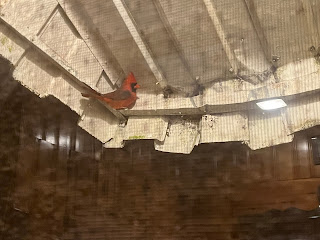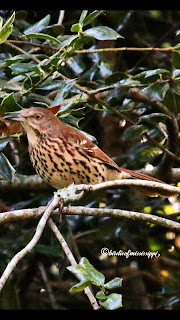IN TEACHING YOU LEARN
At my house, Friday is called “Bird Friday”. On Friday afternoons I have a Facetime bird class with my Southaven grandchildren. It’s a wonderful way for me to share my love of birds and photography with them. Since we all take this class seriously, I know that it also adds to their education. They are only 8 and 5 years old and I am sometimes amazed at how much they retain. And since we are in the middle of this pandemic, I am thankful that this gives us a set time to visit and I can find out what they have been up to during the week.
I have found that when I prepare for my weekly Birdie article and for “Bird Friday,” I learn a lot from the preparation. Several years ago, I bought my grandchildren copies of the field guide - “Birds of Louisiana & Mississippi” by Stan Tekiela at Wild Birds Unlimited in Southaven. It is a small book that is just right for kids to handle and it is also easy to throw into my backpack for birdie field trips. We use this book as our textbook because it has one small page devoted to each bird. We don’t cover every detail of a bird, but I do like for us to get a general idea of the size, its appearance and any interesting facts about the bird.
Last Friday our lucky bird was the Blue Jay. The Blue Jay is a beautiful bird, but not everyone likes a Blue Jay. The Blue Jay can be loud, aggressive and a bully. Because it is 12” long, it is larger than most birds that come to bird feeders. My Senatobia grandchildren are not fans of Blue Jays. They love the tiny American Goldfinches that come to their feeders in the spring, but a couple of years ago they witnessed a Blue Jay head butt one of their little Goldfinches. The Goldfinch fell dead on the spot and they were heartbroken! And after hearing that awful story I’m sure that you are thinking “What’s good about a Blue Jay?”
The Blue Jay is a highly intelligent bird and can solve problems. And even though small birds may have some issues with them, they actually save many small birds. If anything dangerous comes into the forest or into your backyard the Blue Jay sounds a loud alarm by screaming out like a hawk causing all birds large and small to fly for cover.
The Blue Jay caches its food in hidden locations so that it will have food for another day. Sometimes he forgets where he has hidden his acorns and these planted seeds cause forests to sprout. An interesting Jay fact is that when he flies back to his nest or his hiding spot, he tucks seeds and nuts in a pouch under its tongue (sublingual).
Jays also eat lots of nuisance insects and bugs that may be harmful to us - which makes the Jay a major factor in the control of your yard’s insect population. For those that are allergic to wasps - Jays tear up and eat wasp nests including the larvae and the queen wasp!
Since Jays are so smart, they are interesting to watch because you never know what they may do next. If they see a cat lurking in the shadows, they mimic the cat’s sounds so that the other birds know that a cat is hiding just waiting to get them. They also peel chips of light colored paint off of houses because they need calcium in their diets and they find calcium for their eggs in those paint chips!
I am so amazed at the individual personalities and unique antics of birds and that God created thousands of bird species to make our world so awesome! I encourage you to “Stand still, and consider the wondrous works of God” Job 37:14 and as you do, please “Look at the birds of the air…” Matthew 6:26.
My photos may be viewed & “LIKED” on Facebook, Instagram and Pinterest - “Birdie of Mississippi”.
E-mail: birdieofmississippi@gmail.com - Read my Blog @ http://www.birdieofmississippi.blogspot.com




💕🙌
ReplyDelete